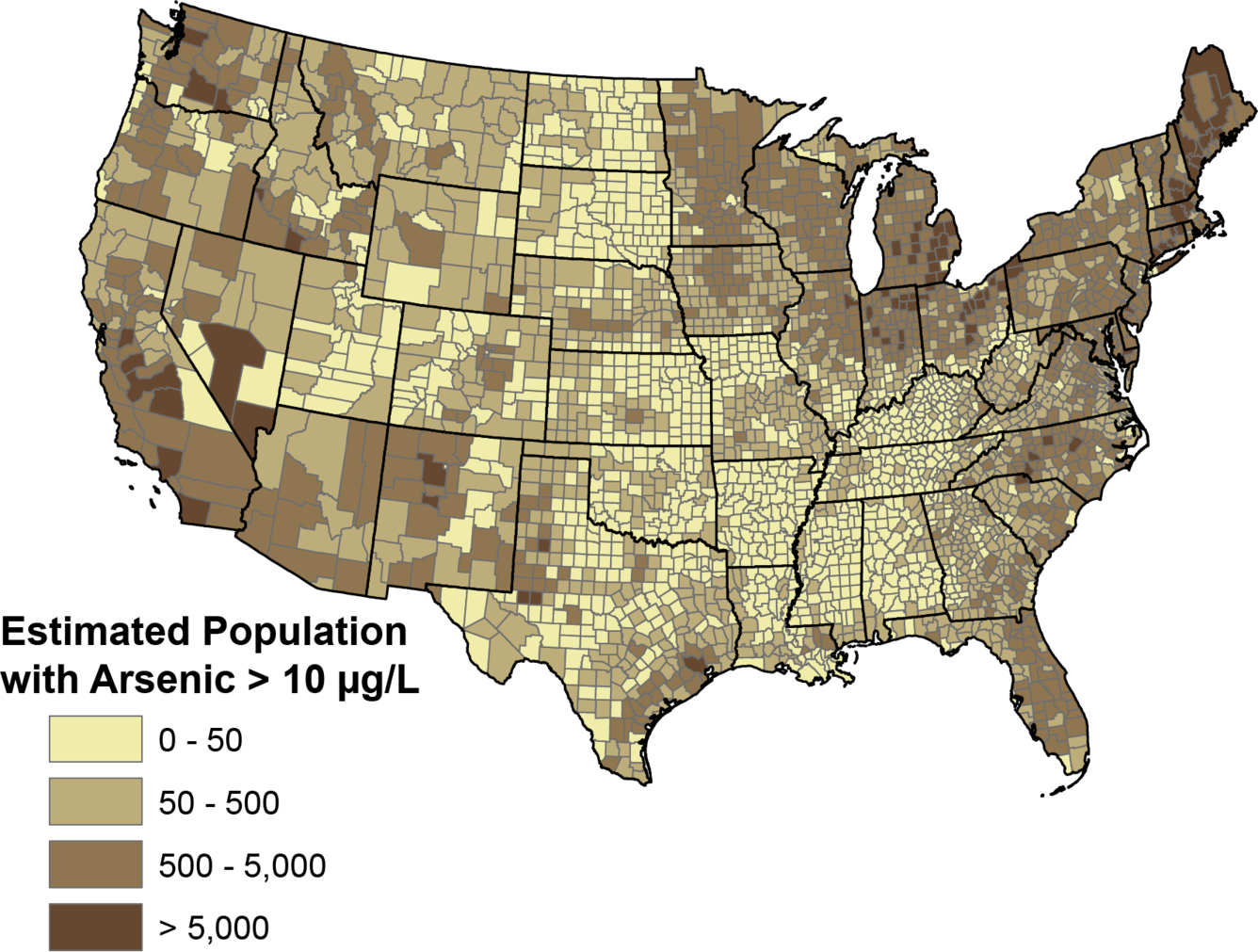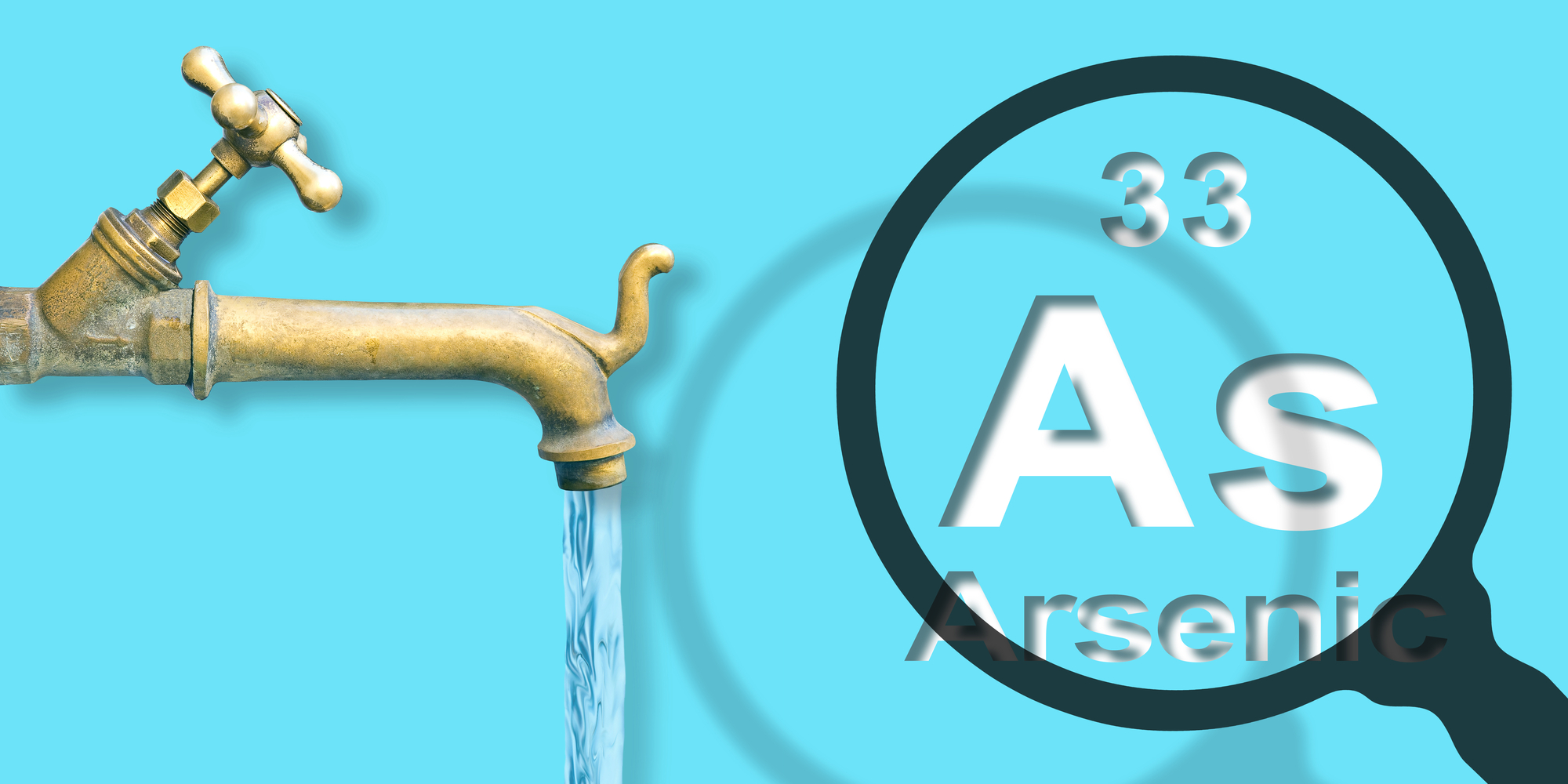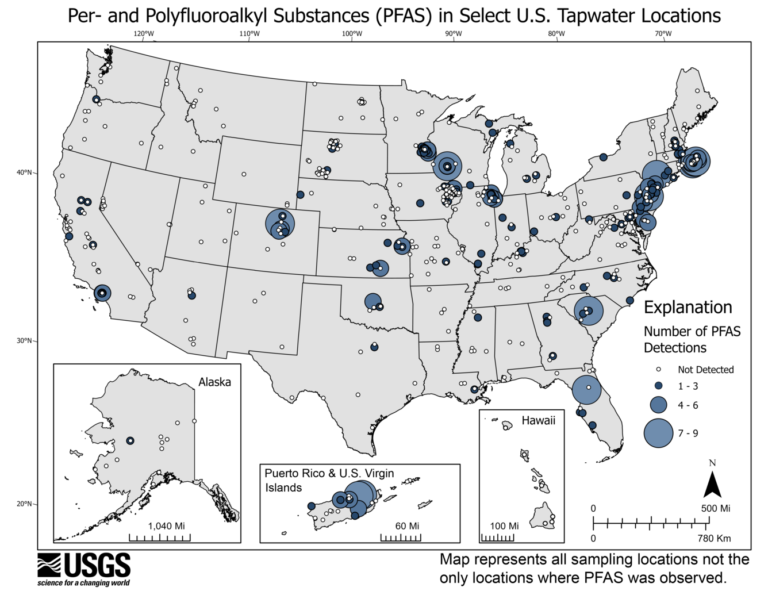Arsenic
Background on Arsenic in Public Water Supplies
Arsenic occurs naturally as a trace component in many rocks and sediments. Whether the arsenic is released from these geologic sources into groundwater depends on the chemical form of the arsenic, the geochemical conditions in the aquifer, and the biogeochemical processes that occur.
Arsenic also can be released into groundwater as a result of human activities, such as mining, and from its various uses in industry, in animal feed, as a wood preservative, and as a pesticide. In drinking-water supplies, arsenic poses a problem because it is toxic at low levels and is a known carcinogen. In 2001, the USEPA lowered the MCL for arsenic in public-water supplies to 10 micrograms per liter (µg/L) from 50 µg/L.
Dangerous Levels in Groundwater Supplies
The USGS plays an active role in protecting human health from potential issues related to our Nation’s natural resources. One vital aspect is assessing the water quality of groundwater supplies. Whether across the U.S. or around the world, the USGS helps measure and monitor drinking water supplies for contaminants like arsenic.
For example, dangerously high levels of arsenic have been found in drinking water wells in more than 25 states in the United States, potentially exposing 2.1 million people1 to drinking water high in arsenic. Possibly the worst case ever of arsenic poisoning occurred in Bangladesh, where over 100 million people2 were poisoned by arsenic in groundwater supplies.
Solutions for Limiting the Risks of Arsenic in Your Water
One of the surest ways to reduce the amount of arsenic in your water is to make use of a reverse osmosis filtration system. Our shop contains multiple varieties of R.O. systems so you may find what works best for your home.








